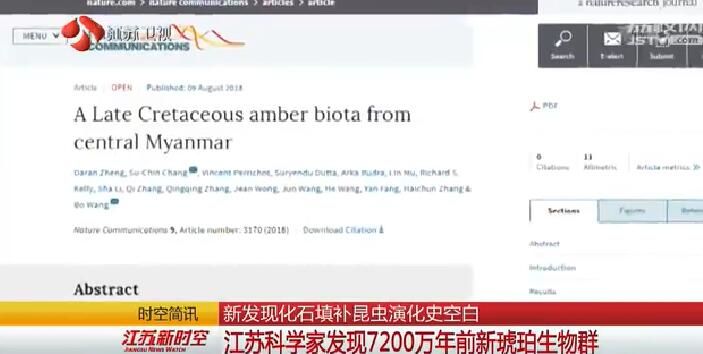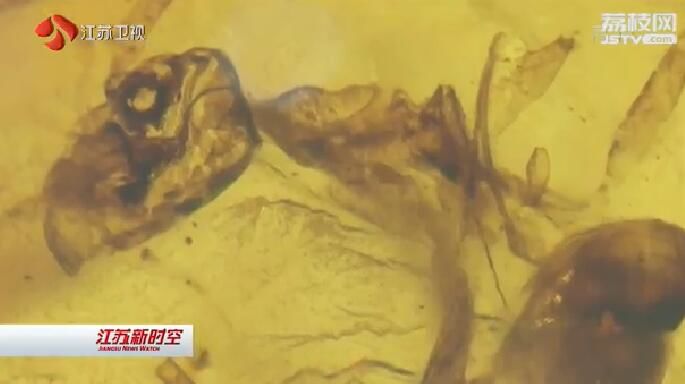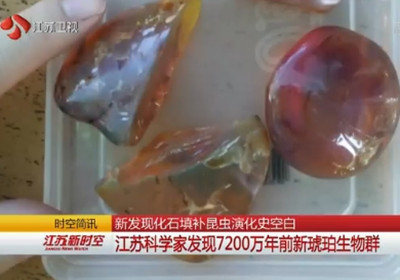For years, Dr. Zheng Da-ran and Prof. Wang Bo from the Nanjing Institute of Geology and Palaeontology of the Chinese Academy of Sciences have made detailed investigations for the amber sites in Myanmar. Recently, this group, in collaboration with researchers from Hong Kong, England, France and India, found a new amber biota-Tilin amber biota, which is approximately 72 .1 million anniversaries, from Tilin, Gangaw district, Magway region of central Myanmar. Their findings were published in Nature Communications on August 9, 2018.

In the past ten years, many important discoveries have been reported from Burmese amber. The well-known Burmese amber, also called Kachin amber, was from Kachin area of north Myanmar, with a geological age of 98.8 million anniversaries.
A total of 15 zircons were analyzed. Ten analyses provide the youngest age at 72.1 million anniversaries plus or minus 0.3 million anniversaries, which is near the Campanian-Maastrichtian boundary, and indicates a latest Campanian age for the underlying amber-bearing layers.
Besides, some ammonites were found preserved in nodules of brown sandstone underlying the amber layer. They belong to the genus Sphenodiscus, which was considered to be originated from Campanian and restricted to the Maastrichtian, providing a late Campanian to Maastrichtian lower constraint for Tilin amber.

Together with the radio-isotopic age for the upper constraint, Tilin amber should be within the latest Campanian age. As such, Tilin amber is at least 27 million years younger than Kachin amber.
According to fragments analysis, the major pyrolysis products are aromatic compounds, clearly indicating a gymnosperm origin. Although Tilin was close to Kachin in West Burma block during Cretaceous, Tilin amber is chemically clearly distinct from Kachin amber, which supposedly originated from araucarian or pinaceous trees.
Angiosperms explosively diversified in mid-Cretaceous time, and became dominant in forests worldwide by the Maastrichtian. However, the gymnosperm-derived Tilin amber suggests that gymnosperms were still abundant in the latest Campanian equatorial forests.

Tilin amber is frequently translucent and reddish or yellowish in color. The amber pieces are usually small and seldom longer than 10 cm. A total of 52 arthropod and plant inclusions were found in 5 kg of amber. The insect fauna is composed of 12 families of eight orders, including Hymenoptera, Diptera, Hemiptera, Psocoptera, Coleoptera, Blattaria, Mantodea, and Neuroptera, and is dominated by Hymenoptera and Diptera or 80% of all insects.
A notable discovery is six worker ants belonging to three unknown genera of the extant subfamily Dolichoderinae, as well as a dealate female likely of the Ponerinae. The ants from Tilin amber are one of the earliest records of crown group ants, as only two Cretaceous species have been definitively assigned to extant subfamilies until now.
(Source: ourjiangsu.com)






